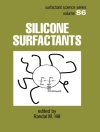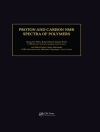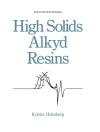ADVANCED MATERIALS and MANUFACTURING TECHNIQUES for BIOMEDICAL APPLICATIONS
The book provides essential knowledge for the synthesis of biomedical products, development, nanomaterial properties, fabrication processes, and design techniques for different applications, as well as process design and optimization.
In origin, biomaterials can come from nature or be synthesized in the laboratory with a variety of approaches that use metals, polymers, ceramic, or composite materials. They are often used or adapted for various biomedical applications. Biomaterials are commonly used in scaffolds, orthopedic, wound healing, fracture fixation, surgical sutures, artificial organ developments, pins and screws to stabilize fractures, surgical mesh, breast implants, artificial ligaments and tendons, and drug delivery systems.
The sixteen chapters in Advanced Materials and Manufacturing Techniques in Biomedical Applications cover the synthesis, processing, design, manufacturing, and characterization of advanced materials; self-healing, bioinspired, nature-resourced, nanobiomaterials for biomedical applications; and manufacturing techniques such as rapid prototyping, additive manufacturing, etc.
Audience
The book is for engineers, technologists, and researchers working in the area of biomedical engineering and manufacturing techniques. It is also appropriate for upper-level undergraduate and graduate students.
Yazar hakkında
Arbind Prasad, Ph D, obtained his doctorate from the Indian Institute of Technology Guwahati, Assam. He is currently an assistant professor and Head in the Department of Science and Technology, Government of Bihar, Posted at Katihar Engineering College, Katihar, Bihar, India. His main areas of interest include manufacturing, machining, polymer composites, biomaterials, materials processing, and orthopedic biomedical applications He has filled four patents, published more than 10 international journal articles, and edited three books.
Ashwani Kumar, Ph D, is a senior lecturer in mechanical engineering at the Technical Education Department, Uttar Pradesh (Government of Uttar Pradesh), India. He has more than 11 years of research and academic experience in mechanical and materials engineering. He has published 85 research articles in international journals and has authored/edited 13 books on mechanical and materials engineering.
Manoj Gupta, Ph D, was a former Head of the Materials Division of the Mechanical Engineering Department at the National University of Singapore. He has published more than 600 peer-reviewed journal articles and owns two US patents and one trade secret. He has also co-authored eight books. He is currently among the top 0.6% of researchers as per Stanford’s List and among the top 1% Scientist of the World Position by The Universal Scientific Education and Research Network.












